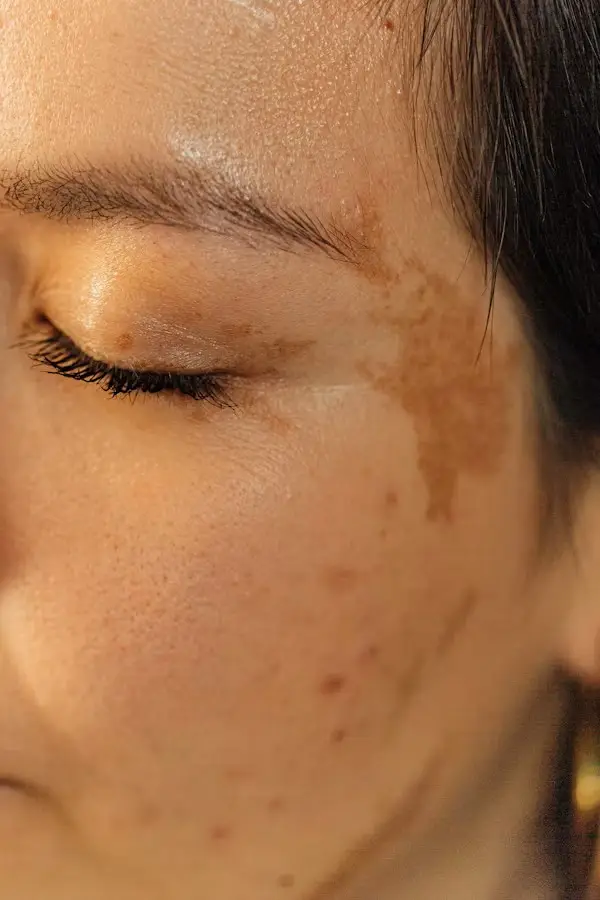Pigmentation: Understanding, Preventing, and Treating Uneven Skin Tone
Pigmentation issues can be frustrating, confusing, and sometimes hard to manage. If you’ve been wondering about it, this post is for you. Understanding what pigmentation is, why it happens, and how to address it will empower you to take control of your skin’s health. More importantly, it will help you glow with confidence every day.
What Is Pigmentation? A Simple Guide About Pigmentation
Pigmentation refers to the color of your skin. It comes from melanin, the natural pigment produced by cells called melanocytes. When melanin production is balanced, your skin tone appears even and healthy. However, when melanin is overproduced or unevenly distributed, pigmentation issues like dark spots, melasma, and hyperpigmentation occur.
Overall, learning about it means recognizing that it’s a common condition that affects all skin types and tones. Especially, it can be caused by sun exposure, hormonal changes, inflammation, or even certain medications.
Types of Pigmentation: Know What You’re Dealing With
Whenever you think about pigmentation, several types might come to mind. Here’s a quick overview:
Hyperpigmentation: Dark patches caused by excess melanin. This can be from sun damage, acne scars, or inflammation.
Melasma: Often triggered by hormones, especially during pregnancy or with birth control use. It shows as large, symmetrical brown patches.
Post-Inflammatory Hyperpigmentation (PIH): Dark spots that remain after an injury, like acne or eczema.
Hypopigmentation: Lighter patches where melanin is lost or reduced.
Firstly, understanding these types is essential when deciding how to treat and prevent it issues.
Causes of Pigmentation: Why Does It Happen?
It forms for many reasons, and it often comes down to how your skin responds to various triggers. For example, some common causes include:
Sun Exposure: UV rays stimulate melanin production as a natural defense. Unfortunately, too much sun leads to uneven pigmentation.
Hormonal Changes: Pregnancy, birth control, and other hormone shifts can trigger melasma.
Skin Trauma: Acne, cuts, or irritation cause inflammation that can leave lasting dark spots.
Genetics: Some people are naturally more prone to pigmentation.
Medications: Certain drugs increase sun sensitivity or affect melanin production.
Aging: As skin ages, pigment cells may behave irregularly.
Furthermore, by learning about it, you’ll better understand how to protect your skin from these triggers.
Prevention Tips: How to Protect Your Skin From Pigmentation
Overall, the best way to manage is to prevent it in the first place. Here’s how:
1. Use Sunscreen Daily — No Exceptions
Sun protection is your number one defense against pigmentation. Always apply broad-spectrum sunscreen with at least SPF 30. Remember to reapply every two hours if you’re outside for long periods. Hats, sunglasses, and seeking shade help too.
2. Avoid Picking or Scratching Your Skin
Inflammation worsens pigmentation. Resist the urge to pop pimples or scratch irritated areas, as this can cause post-inflammatory hyperpigmentation.
3. Use Gentle Skincare Products
Harsh ingredients and over-exfoliating can inflame your skin and worsen pigmentation. Stick to gentle cleansers and exfoliate no more than 2-3 times per week using mild acids like lactic acid or PHA.
4. Maintain a Healthy Lifestyle
Eat a balanced diet rich in antioxidants (think berries, leafy greens, nuts) and stay hydrated. That’s why, these habits support skin repair and overall glow.
Treatment Options: How to Fade Pigmentation Safely
If it is already visible, don’t worry. There are effective ways to treat it safely:
Topical Treatments
-
Vitamin C: A powerful antioxidant that brightens skin and evens tone.
-
Niacinamide: Reduces inflammation and blocks pigment transfer.
-
Azelaic Acid: Helps fade dark spots and calms acne-related pigmentation.
-
Retinoids: Promote cell turnover and fade pigmentation over time.
-
Hydroquinone: A strong lightening agent, but should be used under dermatologist’s supervision.
Professional Treatments
-
Chemical Peels: Exfoliate damaged skin layers and stimulate new growth.
-
Laser Therapy: Targets pigment with precision but requires expert care.
-
Microneedling: Promotes collagen and can reduce pigmentation scars.
However, always consult a skincare professional before starting treatments, especially if you have sensitive or darker skin tones, as some procedures can cause more pigmentation if done incorrectly.
Lifestyle Changes to Support Healthy Skin
While topical and professional treatments are powerful, supporting your skin from the inside out matters too. Consider:
Stress Management: High stress can worsen skin inflammation and pigmentation.
Adequate Sleep: Helps skin repair and regenerate overnight.
Consistent Routine: Patience is key; pigmentation treatments take time and consistency.
Your Skin’s Journey
Beneath the surface, stories hide,
In spots and shades, where hues collide.
Yet every mark, a tale to tell,
Of strength and time, where you dwell.
With care and love, your skin will heal,
Revealing glow that’s true and real.
So cherish each imperfection’s grace,
For they belong in your own space.
When to See a Dermatologist
If it worsens or you’re unsure about your skin type and treatment, professional advice is crucial. Furthermore, dermatologists can tailor therapies specifically for your skin’s needs and monitor progress safely.
Key Takeaway
Moreover, learning about pigmentation not only empowers you but also helps you take control with confidence. From prevention to treatment, the journey requires patience, consistent care, and a deep understanding of your unique skin. Furthermore, your glow is more than just skin-deep — it’s truly about nurturing yourself both inside and out. Therefore, by embracing this knowledge, you set the stage for lasting radiance and self-love.
Additionally, read our blog for more.

